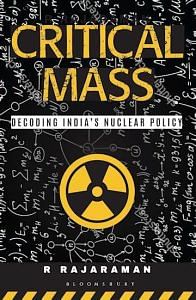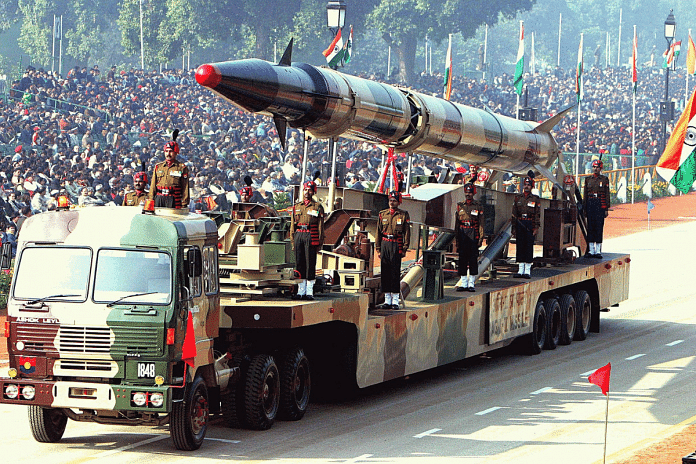There are several corollaries that logically follow from a clear understanding of what CMD implies. Perhaps the most important one is that the logic of minimum deterrence does not require you to equal the offensive forces of the adversary. This is quite different from the conventional wisdom that has prevailed over the ages in military preparedness but does not necessarily hold in the nuclear context, as has been pointed out long ago.
For instance, Kenneth Waltz wrote, ‘The question is not whether one country has less than another but whether it can do unacceptable damage to another.’ More succinctly, as Waltz puts it, ‘More is not better if less is enough.’ Sundarji was aware of Waltz’s injunction, and one of the characters in his fictional work quotes Waltz to oppose the need for India to go into an arms race with Pakistan.
Traditionally, in building a nation’s military capacity, it makes sense to match, if not exceed, the enemy’s strength with your own— elephant for elephant in the old days or tank for tank, battleship for battleship and bomber for bomber in the modern era. A simplistic extrapolation of this logic to the nuclear context would call for similarly matching one’s stock of warheads and their kilo-tonnage with that of the enemy.
Such blind application of conventional military thinking was adopted during the early decades of the Cold War when the US and the USSR mindlessly pursued a nuclear arms race. As though in a state of collective hypnosis under the spell of the arms race, the two nations competed with one another to build, between them, a staggering arsenal of over 60,000 warheads— mostly thermonuclear bombs—by the seventies.
If used, that would have been enough to annihilate those two nations several times over, leaving no winners or losers. It would also do irreparable damage to the rest of the world. Survivors would have to rebuild civilisation on a barren, scorched and radioactively polluted earth under the shroud of a ‘nuclear winter’ created by the pulverised debris and smoke thrown into the atmosphere.
Also read: Tripura was almost part of Pakistan. Congress, Communists came together to stop this
As the absurdity of building a massive arsenal to ‘win’ a nuclear war, not to mention its cost, began to dawn on the brilliant nuclear strategists of the two superpowers, they have started the valiant effort to reduce their stockpiles through long and arduous negotiation in recent decades. But, even today, each side still has thousands of tactical and strategic weapons enough to destroy human civilisation.
In the meantime, US nuclear analysts and think tanks put a more attractive spin on this policy of massive nuclear armament. They have justified it by claiming that it provides deterrence through mutually assured destruction. Their thesis is that the threat of such massive mutual destruction has kept the two superpowers fearful of engaging in excessive brinksmanship against each other, let alone start wars.
As one can imagine, this argument has provided fodder for much scholarly analysis on whether, more generally, nuclear arms have helped prevent wars. A counterexample often trotted out is the Kargil war in 1999 between India and Pakistan just a year after the two countries turned nuclear.
Other examples are major proxy wars such as the one in Vietnam between the US‒backed South Vietnamese and the USSR‒China-backed North Vietnamese. Their massive nuclear forces could not prevent the Americans from losing thousands of soldiers in the Vietnam war. Similarly, their huge nuclear force could not prevent the USSR from the ignominy of having to pull out of Afghanistan after having successfully occupied it.
Either way, whether massive nuclear arsenals help maintain peace, they are clearly not examples of minimum deterrence. While the threat of mutually assured destruction will certainly act as a deterrent, far smaller threats will do that too.
All you need to do is maintain a credible threat of causing unacceptable damage to the other side. As we have discussed earlier, given today’s sensibilities on the sanctity of civilian lives, the assured death of half a million people in a couple of major cities is already unacceptable damage, and a handful of successful bombings is sufficient for that.
The size of the enemy’s offensive capacity or the number/kilo-tonnage of its nuclear warheads is not really the relevant factor in determining how much nuclear force is needed for establishing deterrence against them. To use a distasteful but apt analogy, a lone individual wishing to bring a powerful gangster to his knees need not acquire a large body of armed henchmen and goons to match what the gangster has; it is sufficient if he can rustle up enough manpower to kidnap the latter’s beloved daughter.
Also read: Shaadi.com’s Angry Brides game has a modern, Durga-like woman battling India’s dowry problem
North Korea: A Concrete Example of CMD
Developments relating to the North Korean nuclear force amply illustrate the power of CMD at its most minimal! As per publicly available information, Democratic People’s Republic of Korea (DPRK) does not yet have, as of 2020, even a single fully nuclear-armed missile to hit the US West Coast.
While in recent years it has successfully tested several nuclear warheads of increasing yield,10 as well as missiles with range sufficient to reach the US mainland,11 it has not yet fully succeeded in marrying the two. According to David Wright’s expert analysis, North Korea is still in the process of miniaturising the warhead, ensuring not only that it will fit into the missile but also survive the re-entry process.
Yet, with not even one nuclear-armed ICBM fully ready to fire, North Korea has already deterred any pre-emptive attack on its nuclear facilities by the US. The imminent threat that it may soon have the capacity to hit, say, Los Angeles with at least a fission bomb, if not a thermonuclear weapon of the kind they have recently tested successfully, is considered sufficient to act as a deterrent.
A single atom bomb dropped on Los Angeles, Seattle or San Francisco will immediately kill, depending on where exactly it lands, several tens of thousands of people, quite apart from a larger number of severely wounded ‘survivors [who] will envy the dead’. No US government can consider this ‘acceptable damage’ as has been amply illustrated by the fact that not even a president as hawkish as Trump could seriously back his bluster of destroying North Korea with actual action.
Obviously, the North Korean arsenal (of less than even one fully functional weapon) is minuscule compared to that of the US with its thousands of nuclear weapons, some deployed and others in stock. This is compelling evidence in support of the argument that a small arsenal is sufficient to deter a large and powerful adversary. The size of the enemy’s offensive nuclear forces does not matter.
There are concrete lessons from all this for us in India as long as we believe in a doctrine of minimum deterrence. The first is that there is no need for us to enter an arms race with either Pakistan or China. The continued development of more, bigger or better bombs by either nation need not bother us.
Reports that Pakistan is building its arsenal faster than India, even to the extent that they are true, need not spur us on to make more warheads since our current stock of fission weapons is more than sufficient to cause unacceptable damage to them and deter any first strikes by them. Similarly, even though China possesses dozens of H-bombs, there is no need for India to develop a thermonuclear weapon to ensure minimum deterrence.
Also read: Music & songs united Indians against ‘jalim’ British. Gandhi knew of this electric effect
In this connection, it is interesting to recall the controversy some years ago about one of our 1998 nuclear tests in Pokhran. To everyone’s surprise, Dr K. Santhanam, one of the key scientists involved in coordinating the Pokhran tests, publicly announced a decade after the tests that one of them, which was purported to be of a thermonuclear weapon, had in fact fizzled out.
The issue of whether this test was fully successful had been raised even earlier, particularly by Western experts. (See Raj Chengappa’s review of this debate.) Understandably, this statement created a stir and was contested by some of our nuclear establishment scientists, notably Dr R. Chidambaram, a former chairman of the AEC and one of the principal architects of the 1998 tests.
However, another distinguished former chairman of AEC Dr P.K. Iyengar felt that the situation did call for more tests even though India had declared a moratorium on further testing.
Till today, the issue of whether or not that ‘thermonuclear’ test succeeded at a technical level remains unresolved to everyone’s satisfaction. But, as I argued in an article published at that time, it does not matter much for our strategic preparedness whether that test fizzled or not since a thermonuclear weapon is not really needed for minimum deterrence.
 This excerpt from ‘Critical Mass: Decoding India’s Nuclear Policy’, authored by R. Rajaraman, has been published with permission from Bloomsbury.
This excerpt from ‘Critical Mass: Decoding India’s Nuclear Policy’, authored by R. Rajaraman, has been published with permission from Bloomsbury.



